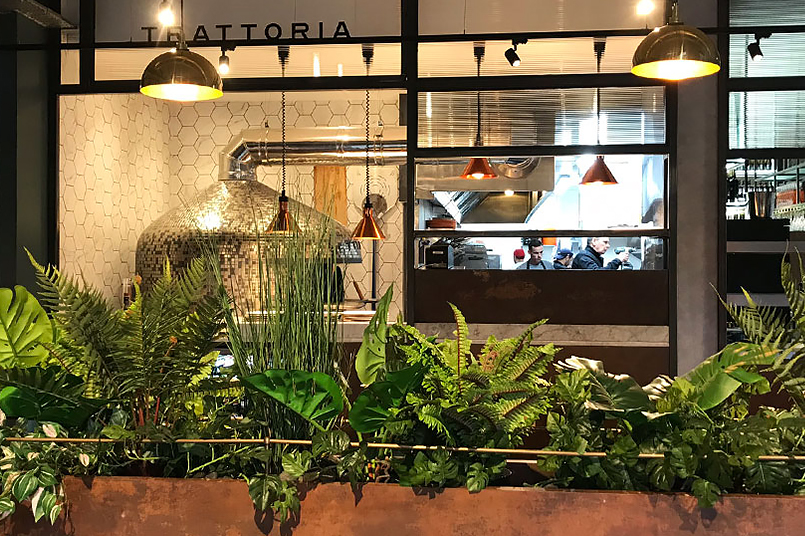
16 Feb Exploring Creative Themes for Restaurant Interiors
Restaurant interior design is a crucial factor that can significantly impact the success of a business. A carefully designed interior can establish a welcoming atmosphere, elevate the dining experience, and ultimately increase customer traffic. In this article, we will examine essential aspects of restaurant interior design.
Theme & Concept
The first consideration in restaurant design is the overall theme or concept. The theme or concept of a restaurant should be reflected in its interior decor. This can range from a rustic farmhouse look for a farm-to-table restaurant, to a sleek and modern design for a high-end sushi restaurant. The theme or concept should be consistent throughout the interior, from the colours and materials used to the lighting, furniture and food brand design.
10 Restaurant Theme Ideas:
- Farm-to-Table: A rustic, earthy feel with natural materials, exposed brick, and farmhouse tables.
- Urban Industrial: Sleek, modern design with concrete, steel, and minimalist furniture.
- Vintage Diner: Retro booths, checkerboard floors, and neon lights.
- Beachside Bistro: Coastal-themed decor with shades of blue, white, and sand, sea-inspired elements, and casual furniture.
- Italian Trattoria: Traditional Italian decor with red and white checkered tablecloths, rustic wooden chairs, and brick walls.
- French Bistro: Parisian-inspired decor with red banquettes, bistro chairs, and black and white tiled floors.
- Sports Bar: Sports-themed decor with memorabilia on the walls, high-top tables, and a large bar.
- Asian Fusion: Contemporary design with minimalistic furniture, warm lighting, and Asian-inspired artwork and decorations.
- Outdoor Oasis: A garden or terrace setting with greenery, natural textures, and soft lighting.
- Speakeasy: Dark and moody with vintage decor, velvet curtains, and dim lighting.
Layout
Professional designers understand the layout of a restaurant is also a crucial aspect of interior design. A well-planned layout can improve traffic flow, increase seating capacity, and create a comfortable and enjoyable dining experience for customers. The layout should consider the size and shape of the restaurant, the type of cuisine being served, and the number of customers the restaurant can accommodate.
Lighting
The use of lighting is another key consideration in interior restaurant design. Lighting can create a warm and inviting atmosphere or be used to highlight specific interior features, such as artwork or architectural details. Different types of lighting, such as ambient, task, and accent lighting, can be used to create the desired effect.
Furniture
The selection of furniture and decor is also an important aspect of restaurant interior design. The furniture should be comfortable and functional, while also complementing the overall theme or concept of the restaurant. The decor, such as artwork, plants, and other decorative elements, should also reflect the restaurant’s theme or concept and create a cohesive look.
Materials
Finally, the choice of materials and finishes is an essential consideration in the restaurant’s design. Materials and finishes should be durable, easy to clean, and able to withstand heavy use. They should also be consistent with the theme or concept of the restaurant and create a visually appealing interior.
In Conclusion
The interior design of a restaurant plays a vital role in its success. A well-designed interior can create a welcoming atmosphere, enhance the dining experience, and ultimately attract more customers. When considering the commercial interior design of a restaurant, it is important to consider the theme or concept, layout, lighting, furniture and decor, and materials and finishes. By carefully considering these elements, restaurant owners can create an interior that is visually appealing but also functional and comfortable for their customers.
Bedrock expertly designs interiors for all types of clients, from small independents to large international chains. Whether you are planning new restaurant fit outs or looking to refresh an existing space, we can help bring your vision to life. If you have an idea you would like to discuss with us, give us a call at 01604 250002, or browse through our restaurant projects.


